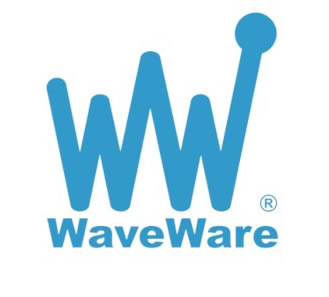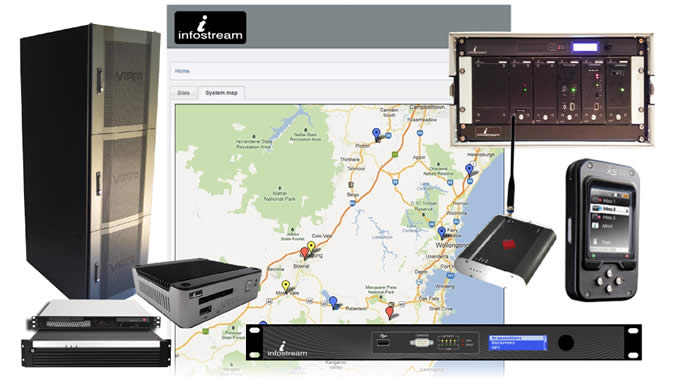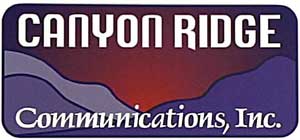Selected portions of the BloostonLaw Telecom Update, and/or the BloostonLaw Private Users Update — newsletters from the Law Offices of Blooston, Mordkofsky, Dickens, Duffy & Prendergast, LLP are reproduced in this section with the firm's permission. 
| BloostonLaw Telecom Update | Vol. 18, No. 3 | January 21, 2015 |
FCC Subpoenas CPNI for Special Access Data CollectionOn January 16, the FCC’s Wireline Competition Bureau issued a Public Notice and administrative subpoena ordering providers of special access services to submit the customer-related information sought in the special access data collection. The purpose of the subpoena, according to the Bureau, is to allay concerns raised by NCTA and USTelecom about federal privacy statutes that may be implicated when responding to the data collection, such as the Electronic Communications Privacy Act and the FCC’s own CPNI rules (Section 222 of the Communications Act). The Bureau said the subpoena “removes any uncertainty as to obligations of respondents to produce the customer information sought,” consistent with federal privacy statutes. Headlines
House Energy and Commerce Committee Releases Draft Internet LegislationOn January 16, the House Energy and Commerce Committee released draft legislation it claims “provide[s] clear rules of the road for open and unfettered access to the Internet” and “guarantees Internet users will continue to be the decision makers for the content they want, while ensuring that innovation and investment continue to fuel the robust future of the Internet.” In its current form, the draft legislation covers a number of Internet-related points of debate. First, the draft legislation addresses Net Neutrality by adding a section titled Internet Openness to the Communications Act which provides that a person engaged in the provision of broadband Internet access service: (1) May not block lawful content, applications, or services, subject to reasonable network management;
(2) May not prohibit the use of non-harmful devices, subject to reasonable network management;
(3) May not throttle lawful traffic by selectively slowing, speeding, degrading, or enhancing Internet traffic based on source, destination, or content, subject to reasonable network management;
(4) May not engage in paid prioritization; and
(5) Must publicly disclose accurate and relevant information in plain language regarding the network management practices, performance, and commercial terms of their service offering.
Second, the draft legislation attempts to clearly define the boundaries of the FCC’s authority to regulate the Internet by requiring the FCC to adopt formal complaint procedures to address violations of the above requirements, and emphasizing that nothing in the draft legislation may be construed to: (1) Supersede any obligation of a provider to address the needs of emergency communications or law enforcement;
(2) Prohibit reasonable efforts by a provider to address copyright infringement or other unlawful activity; or
(3) Limit consumer’s choice of service plans or consumers’ control over their choses service provider.
Finally, the draft legislation would amend Section 706 of the Communications Act, which many of the nationwide providers are encouraging the FCC to rely upon to regulate the Internet going forward, to read that, “[t]he Commission or a State commission with regulatory jurisdiction over telecommunications services may not rely on [Section 706] as a grant of authority.” Interestingly, this language does not appear to be limited to the question of Internet regulation, but instead purports to limit the FCC’s ability to rely upon Section 706 to regulate in any area. As this edition of the BloostonLaw Telecom Update went to press, the Senate and the House held back-to-back hearings on the draft legislation entitled Protecting the Internet and Consumers through Congressional Action. In the morning, the House Energy and Commerce Committee’s Subcommittee on Communications and Technology, led by Committee Chairman Fred Upton (R-MI) and Subcommittee Chairman Greg Walden (R-OR), heard testimony from The Honorable Meredith Attwell Baker, President and CEO of CTIA-The Wireless Association; Chad Dickerson, CEO of Etsy; Jessica Gonzalez, Executive Vice President and General Counsel at the National Hispanic Media Coalition; Mr. Paul Misener, Vice President of Global Public Policy for Amazon.com; Michael Powell, President and CEO of the National Cable & Telecommunications Association; and Dr. Nicol Turner-Lee, Vice President & Chief Research and Policy Officer at the Minority Media & Telecommunications Council. In the afternoon, the Senate Committee on Commerce, Science, and Transportation, led by Chairman John Thune (R-S.D.), heard testimony from Ms. Attwell Baker, Mr. Misener, and Dr. Turner-Lee, who returned to the witness panel, and were joined by Mr. Gene Kimmelman, President and CEO of Public Knowledge; The Honorable Robert McDowell, Senior Fellow at the Hudson Institute; and Mr. Tom Simmons, Senior Vice President of Public Policy at Midcontinent Communications. FCC to Vote on Municipal Broadband Petitions Next MonthOn the heels of President Obama’s speech in Cedar Falls, Iowa last week, in which he indicated he would be sending a letter to the FCC urging them to preempt state legislation that prohibits or otherwise impedes the deployment of municipal broadband networks by city utilities, the Washington Post is reporting that the FCC will vote next month on the petitions from Chattanooga, Tenn. and Wilson, N.C. asking the FCC to do just that. According to the article, the vote is expected to take place at the FCC's monthly meeting on Feb. 26, said an FCC official who declined to be named. (If this sounds familiar, readers will recall that the Feb. 26 meeting is also currently expected to include the FCC’s new Net Neutrality order.) Though the meeting is still over a month away, three Commissioners have tipped their hands when it comes to the municipal broadband petitions. As we reported last week, Commissioner Pai immediately issued a statement that, “the FCC must make its decisions based on the law, not political convenience. And U.S. Supreme Court precedent makes clear that the Commission has no authority to preempt state restrictions on municipal broadband projects.” Since then, Chairman Wheeler and Commissioner O’Rielly also issued statements. Chairman Wheeler’s response was somewhat non-committal, indicating simply that “the FCC has been working diligently to expand broadband deployment and increase consumer choice and competition nationwide, including reviewing complaints from cities that have been prohibited from providing competitive high-speed alternatives,” while Commissioner O’Rielly was much more succinct: “It is disappointing that the Commission’s leadership is without a sufficient backbone to do what is right and reject this blatant and unnecessary interference designed to further a political goal.” Commissioner O’Rielly also said that, “[m]unicipal broadband has never proven to be the panacea that supporters claim and the Administration now boasts. Instead, we have seen a long track record of projects costing more than expected and delivering less than promised” – a sentiment was very recently echoed (on January 20) in a new study announced by the Phoenix Center entitled, Why Chattanooga is not the “Poster Child” for Municipal Broadband. DISH may become Spectrum Wholesaler: Opportunity for Rural Carriers?Fierce Wireless is reporting that DISH could become a wholesale wireless capacity provider, perhaps in partnership with Sprint; and that its spectrum could be worth more in that scenario than it would be if Dish sold its licenses, according to a new report from financial analyst New Street Research. It is projected that a spectrum wholesaling arrangement could eventually net Dish around $10 billion in revenue per year, according to the analysts. Dish faces buildout requirements on its AWS-4 spectrum, which requires the company to cover at least 40 percent of the population in its licensed areas by the end of 2016, or face stiff penalties. A wholesale arrangement could address that issue, since a lessee’s network coverage would count toward Dish’s buildout obligation. DISH controls 40 MHz of AWS-4 spectrum and 10 MHz of 1900 MHz PCS H Block spectrum. DISH's AWS-4 spectrum runs from 2000-2020 MHz (for the uplink) and 2180-2200 MHz (for the downlink). DISH also has 5 MHz of 700 MHZ E-Block licenses in 168 markets. If DISH were to become a wholesaler of spectrum, it could present an opportunity for small and rural carriers that have not been able to obtain the desired spectrum for a wireless play in an FCC spectrum auction or the aftermarket. A spectrum lease could be tailored so that it covered only those areas sought by the lessee, whereas FCC designated market areas often contain territory that a small or rural carrier may not want or be able to cover. As always, the devil would be in the details. Law & Regulation
AT&T Challenges FCC Interpretation of Data Roaming RulesNot unexpectedly, AT&T has filed an Application for Review of Wireless Bureau’s Declaratory Ruling granting in large part T-Mobile’s data roaming petition. AT&T argues that the Declaratory Ruling is inconsistent with the Data Roaming Order and renders the “commercially reasonable” standard for data roaming negotiations unlawfully vague under the APA and the Due Process Clause. As previously reported, the FCC’s ruling has provided welcome guidance that could help small and rural carriers to negotiate more fair roaming terms with the nationwide carriers. Oppositions to AT&T’s Application for Review are due February 2. FCC Fines Viacom and ESPN $1.4 Million for Misuse Of Emergency Alert WarningsOn January 20, the FCC officially fined Viacom and ESPN $1.4 million for misusing the Emergency Alert System (EAS) warning tones. The cable networks transmitted EAS warning tones for several days in 2013 to promote the movie “Olympus Has Fallen,” which portrayed a terrorist attack on Washington, D.C. Broadcast or transmission of these tones outside an emergency or test violates the FCC’s laws protecting the integrity of the system. As we reported in the March 5, 2014 edition of the BloostonLaw Telecom Update, the FCC proposed a total fine of $1,930,000 against NBCUniversal, ESPN, and Viacom for the misuse of the warning tones. NBCUniversal paid its $530,000 fine, but ESPN and Viacom objected and requested reductions. The FCC rejected their arguments and imposed fines of $1,120,000 against Viacom and $280,000 against ESPN. The EAS system is a national public warning system that requires broadcasters, cable television operators, wireless cable operators, wireline video service providers, satellite digital audio radio service providers and direct broadcast satellite providers to make it possible for the President of the United States to address the American public in the event of an emergency. This system is also utilized by federal, state and local officials to deliver important emergency information such as Amber Alerts and weather information such as tornado warnings, flood watches and warnings, etc. that are targeted to specific geographic areas. Because of abuses involving the old Emergency Broadcast System – where alert tones had been simulated for other purposes, the FCC adopted strict rules in 1994 that prohibited the improper use or simulation of EAS Alert tones. This is to ensure that the EAS alert tones are taken seriously by the public and are truly able to alert the public to an emergency message that may require prompt or immediate attention. As a result, EAS codes or the Attention Signal may only be broadcast in the event of an emergency or to test the EAS system. The routine use of EAS alert tones for other purposes would relegate the alert tones to mere background noise – thus reducing the needed effect to alert the public to an emergency. Industry 
New York Broadband Program Promises 100Mbps Downstream or BetterOn January 16, New York Governor Andrew Cuomo outlined a third component of his administration’s “2015 State of Opportunity Agenda” – a $1 billion broadband program dedicated to upgrading broadband across the state to provide minimum download speeds of 100Mbps by 2019. The program, called the “New NY Broadband Program”, consists of $500 million of state capital funds from bank settlements “to incentivize the private sector to expand high-speed broadband access in underserved and unserved areas.” The funding will require a 1:1 financial match from recipients, and providers must provide internet speeds of at least 100 Mbps (with funding priority given to those delivering the highest speeds at the lowest cost). The program also allows for 25 Mbps speeds to the most remote unserved and underserved areas of the state, though it appears the network must be scalable to 100 Mbps or more. The program will rely on Regional Economic Development Councils (REDCs) to submit a comprehensive plan to the State that: 1) identifies unserved and underserved areas; 2) aggregates demand across residential, institutional and business sectors; 3) details the most cost-effective means to provide universal access; and 4) leverages state-owned assets where possible. “Access to high-speed internet is critical to ensuring that all New Yorkers can reach their full potential in today’s technology-driven world,” Governor Cuomo said in a press release. “We’re launching the largest state broadband investment in the nation in order to make that goal a reality. This is a truly bold undertaking that will improve the lives of New Yorkers in every corner of the State, and I am proud to make it a priority of our administration’s second term agenda.” Commissioner Pai Hits Roadblock in Dialogue with Netflix on Open Video StandardsOn January 16, FCC Commissioner Ajit Pai issued a statement attempting to continue his dialogue with Netflix over recent allegation that the company had changed its streaming protocols where open caching was used in a way that impeded open caching software from correctly identifying Netflix traffic. As we reported in previous editions of the BloostonLaw Telecom Update, Commissioner Pai had initially reached out to Netflix by letter to its CEO, Reed Hastings, expressing his concern that such a practice could undermine the viability of open standards and asking for an explanation. Netflix responded that it does not impede proxy caches by changing protocols, but does obscure certain URL structures “to protect [its] members from deep packet inspection tools deployed to gather data about what they watch online.”
According to this latest statement, Commissioner Pai says that in discussions with the company following the exchange of letters, he asked the company to respond to a more specific allegation that suggested it was attempting to impede open caching software after all: specifically, that it had rolled out the encryption protocols by targeting ISPs that had installed open caching appliances first. Netflix had reportedly assured the Commissioner that that this was not true and agreed to submit information after to disprove this charge; one month later, Pai says, that commitment remains unfulfilled. Further, Pai stated that when his office reached out to Netflix for the information (in particular, which ISPs were targeted on which dates), the company refused to turn it over. “If Netflix did not target those ISPs using open caching,” Commissioner Pai asks, “why would it withhold information that would disprove this allegation?” Commissioner Pai concluded his statement by reaffirming that while he does not favor additional FCC regulation in this area, “if a company asks the FCC to impose public utility-style regulation on every broadband provider in the country in the name of preserving the open Internet but then selectively targets open video standards to secure a competitive advantage over its rivals, it should be called to account.” Deadlines 
FEBRUARY 2: FCC FORM 502, NUMBER UTILIZATION AND FORECAST REPORT. Any wireless or wireline carrier (including paging companies) that have received number blocks—including 100, 1,000, or 10,000 number blocks—from the North American Numbering Plan Administrator (NANPA), a Pooling Administrator, or from another carrier, must file Form 502 by February 2 (as February 1 falls on a Sunday this year). Carriers porting numbers for the purpose of transferring an established customer’s service to another service provider must also report, but the carrier receiving numbers through porting does not. Resold services should also be treated like ported numbers, meaning the carrier transferring the resold service to another carrier is required to report those numbers but the carrier receiving such numbers should not report them. Reporting carriers are required to include their FCC Registration Number (FRN). Reporting carriers file utilization and forecast reports semiannually on or before February 1 for the preceding six-month reporting period ending December 31, and on or before August 1 for the preceding six-month reporting period ending June 30. Calendar At A Glance 
January
Jan. 23 – Responses to USTelecom Petition for Reconsideration of Tech. Transition Declaratory Ruling due.
Jan. 29 – Deadline for Special Access Data Collection for large businesses with more than 1,500 employees.
Jan. 30 – Comments are due on the FCC’s Incentive Auction Procedures.
Jan. 31 – FCC Form 555 (Annual Lifeline ETC Certification Form) is due. February
Feb. 2 – FCC Form 499-Q (Quarterly Telecommunications Reporting Worksheet) is due.
Feb. 2 – FCC Form 502 (Number Utilization and Forecast Report) is due.
Feb. 2 – Oppositions are due on AT&T Application for Review of T-Mobile Data Roaming Petition.
Feb. 5 – Comments are due on Technology Transitions NPRM.
Feb. 5 – Comments are due on Windstream Petition for Declaratory Ruling on DS1/DS3 Access.
Feb. 6 – Comments are due on Unlicensed Use of TV Band and 600 MHz Band Spectrum.
Feb. 6 – Comments are due on Part 1 Competitive Bidding NPRM.
Feb. 9 – Comments are due on the IntraMTA Petition for Declaratory Ruling.
Feb. 17 – Filing deadline for Community Connect grant applications.
Feb. 25 – Reply comments are due on Unlicensed Use of TV Band and 600 MHz Band Spectrum.
Feb. 26 – Reply comments are due on Part 1 Competitive Bidding NPRM.
Feb. 27 – Deadline for Special Access Data Collection for small businesses with less than 1,500 employees.
Feb. 27 – Reply comments are due on the FCC’s Incentive Auction Procedures. March
Mar. 2 – Copyright Statement of Account Form for cable companies is due.
Mar. 2 – Annual CPNI Certification is due.
Mar. 2 – FCC Form 477 (Local Competition & Broadband Reporting) is due.
Mar. 9 – Reply comments are due on Technology Transitions NPRM.
Mar. 9 – Reply comments are due on Windstream Petition for Declaratory Ruling on DS1/DS3 Access.
Mar. 11 – Reply comments are due on the IntraMTA Petition for Declaratory Ruling.
Mar. 31 – FCC Form 525 (Delayed Phasedown CETC Line Counts) is due.
Mar. 31 – FCC Form 508 (ICLS Projected Annual Common Line Requirement) is due.
Mar. 31 – International Circuit Status Report is due. | 











































 David George and Bill Noyes
David George and Bill Noyes
































